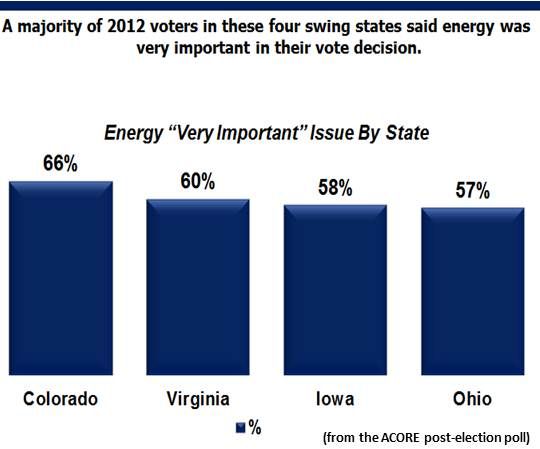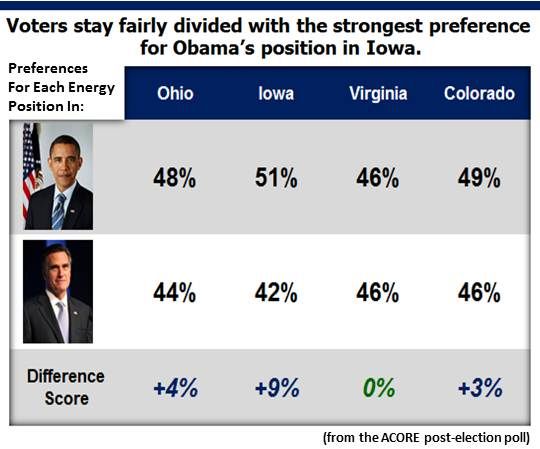“The wind industry was unofficially on the ballot,” American Wind Energy Association (AWEA) CEO Denise Bode said in the opening session of AWEA’s Fall Symposium. The Obama administration “made us a top priority in this election.”
Bode said wind became “a referendum on the ballot. We didn’t mean to be, but Governor Romney came out against the PTC.” Industry lobbyists had spent the previous year educating policymakers on the importance of and broad-based voter support for the $0.022 per kilowatt-hour tax credit to the industry.
In response, Bode recalled, President Obama made renewal of the PTC one of his top five issues, and “[the wind industry] became a referendum on the overall agenda.”
Wind won, according to Bode, with 88 percent of PTC supporting candidates for the House and 86 percent of PTC supporting candidates for the Senate PTC winning seats. Maine even elected a wind developer, Angus King, to the Senate.
“Virtually every candidate who was good on wind either won re-election or was replaced by somebody who is good on wind,” observed OwnEnergy Founder/CEO Jacob Susman.

A new poll done on the day after the election of people who voted in Ohio, Virginia, Iowa, and Colorado found that energy was as important an issue for many voters in those crucial swing states as foreign policy, and that it was more important than abortion.
This is a new and different finding than that in many previous polls that have shown that renewables are popular with voters. This one showed such preferences impacting actual voting decisions.
The poll was commissioned by the American Council on Renewable Energy (ACORE) and conducted by bipartisan pollsters Public Opinion Strategies and Fairbank, Maslin.
“A majority of 2012 voters in these four swing states said energy was very important in their vote decision,” it reported. “More than three-in-five in every state,” the poll found, saw “a clear difference between the candidates in their position on energy.” President Obama’s energy position, poll numbers showed, “held slightly more appeal.”

In states otherwise narrowly divided, there were clear differences in Iowa (9 percent), Ohio (4 percent) and Colorado (3 percent). In Virginia, which otherwise might have been inclined toward Romney, the candidate's stance on energy issues tempered his lead.
The poll also found, as have many previous polls, that voters “want to see cleaner energy encouraged in their state.” Voters prefer natural gas, solar and wind to coal, oil and nuclear. Natural gas led everywhere but Iowa, where wind led.
According to the poll results, “There is strong agreement to transition toward cleaner energy sources” in the four swing states polled, and “swing-state voters are significantly more supportive of a candidate who advocates shifting to cleaner energy sources” (80 percent in Iowa, 75 percent in Colorado, 72 percent in Virginia, 70 percent in Ohio), for spending on clean energy R&D (77 percent in Iowa, 76 percent in Virginia, 75 percent in Ohio, 72 percent in Colorado), and for a national renewable energy standard (76 percent in Iowa, 70 percent in Colorado, 69 percent in Virginia, and 67 percent in Ohio).



